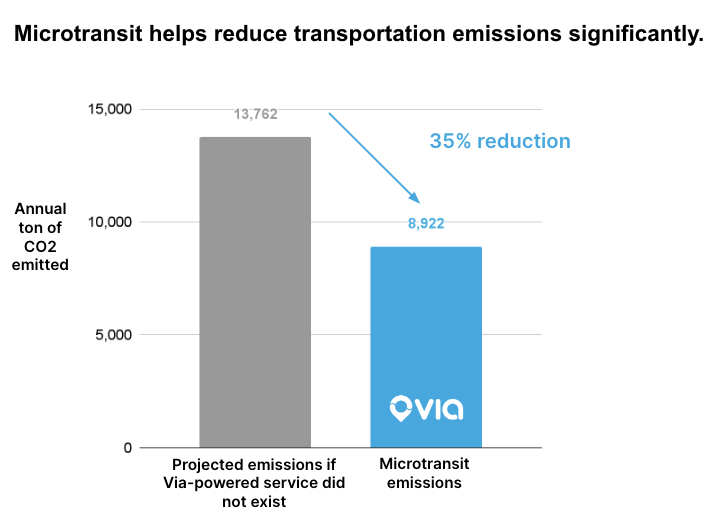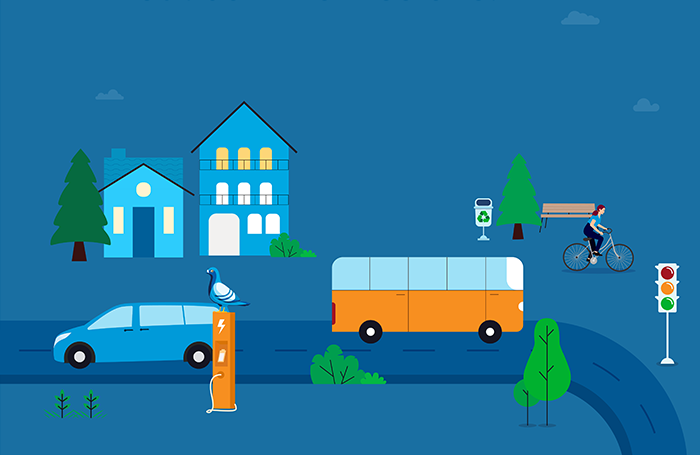Research has consistently revealed public transportation as integral to achieving decarbonization goals . As tech-enabled, on-demand microtransit is moving beyond its pilot phase and becoming a major part of many US cities’ transit networks, we are starting to see the unique role this mobility mode can play in improving sustainability in the long run. Using millions of local trips and rider survey data, Via’s data scientists ran a study to understand the impact of on-demand transit on the local environment across the nation.
Learn how to launch microtransit in your community
We found that 40.8% of Via-powered microtransit rides replaced trips previously served by private vehicles in 2022 . This means that a significant portion of Via's ridership is choosing to use public transportation instead of driving their own cars.

Based on vehicle data, we discovered that microtransit helped reduce overall emissions by 4853 tons in 2022 — a 35.2% decrease. The environmental impact of microtransit is even more prominent when compared to single-occupant vehicles: microtransit emits 41% less GHG per passenger mile on average. In communities with limited fixed route coverage or where private car travel is the dominant mode, such as Newton, Massachusetts, Annapolis, Maryland, and Richmond, California, the introduction of microtransit reduced emissions by more than 50% when compared with previously-available transportation modes. The results are clear: shared rides of on-demand service have made cities greener and more accessible — a win for city residents and the planet. Thinking of bringing this more sustainable mobility option to your city? Read our definite microtransit guide and learn the eight key elements for a successful launch.
A brief note on our methodology:
Using rider survey data and transit density to determine the mode — private car travel, public transit, taxi and ride-hailing, walking or biking — likely replaced by each microtransit trip, our team calculated the change in emissions-per-trip as a result of that mode shift. A bike trip replaced with an on-demand trip would lead to an emissions increase, but a private car trip replaced with an on-demand trip, shared with other riders, would lead to an emissions reduction. This analysis also takes into account a range of other factors, such as the empty miles on-demand vehicles drive in between trips, the fuel economy of different vehicles, and the time private vehicles spend looking for parking.

Data Journalist




%206.png?width=71&height=47&name=The%20Buzz%20Blog%20Hero%20(1750%20x%201200%20px)%206.png)